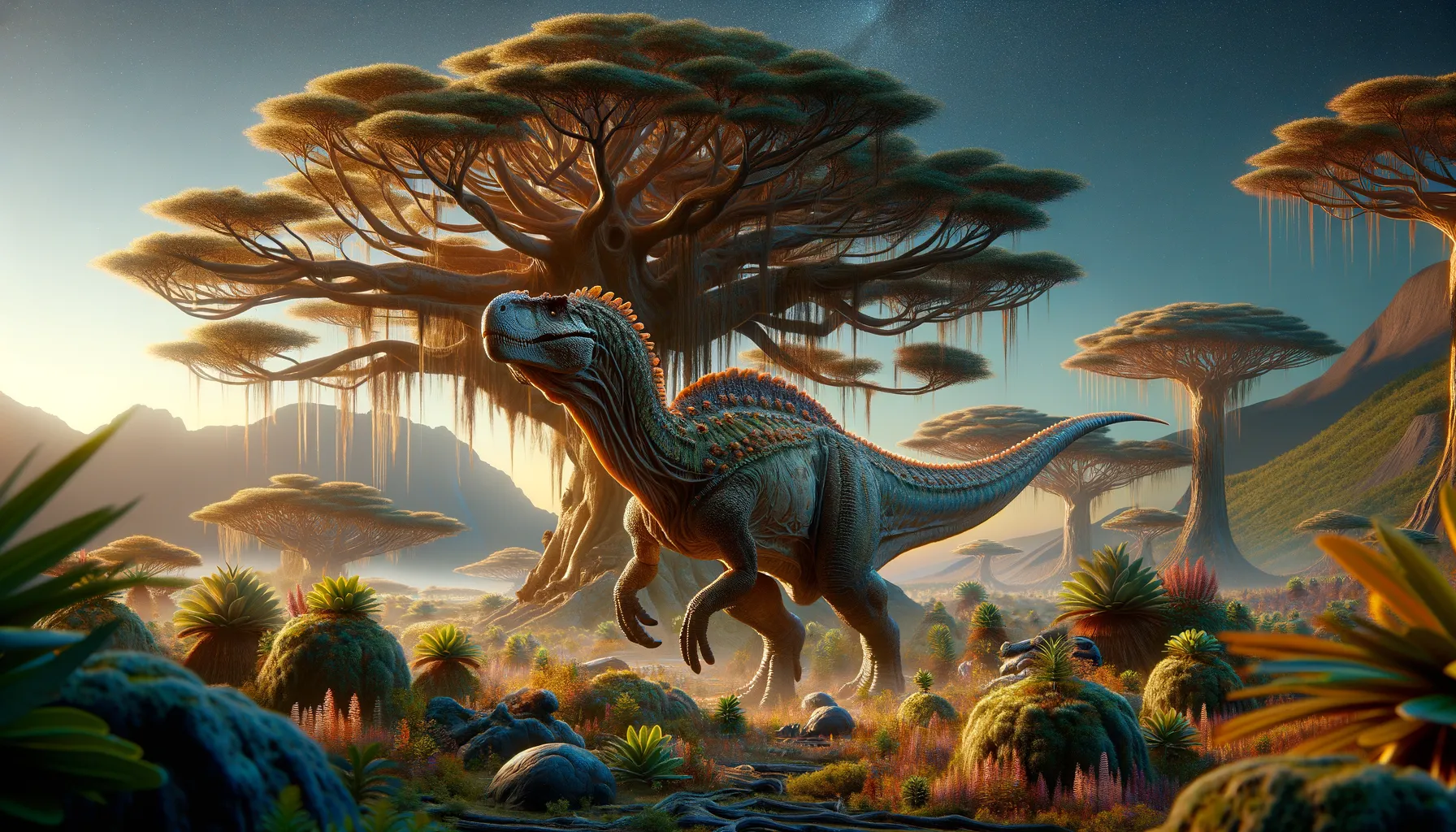
Cedarpelta
Fortified with armor and a tenacious spirit.
Period
Cretaceous
Length
Cedarpelta was about 7 to 8 meters long.
Height
It stood around 2 meters tall at the shoulders.
Weight
Cedarpelta's weight was approximately 5 to 6 tonnes.
Cedarpelta was a herbivorous dinosaur from the Cretaceous period, known for its heavily armored body and a distinctive dome-shaped skull. As an ankylosaurian, it possessed both body armor and a tail club, which served as a defense mechanism against predators. It roamed the ancient landscapes of what is now North America, thriving in its lush environments alongside other gigantic creatures of its time.
Diet
Cedarpelta had a herbivorous diet, feeding on low-lying vegetation. Its beak-like mouth helped it to crop vegetation effectively, such as ferns, cycads, and other prehistoric plants.
Hunting
Being a herbivore, Cedarpelta did not hunt. Instead, it likely spent most of its time foraging and grazing in dense forests and open plains, staying vigilant for predators.
Environmental challenges
Cedarpelta faced significant environmental challenges, including competition for food with other herbivorous dinosaurs and the danger of predation from large theropods. It had to adapt to changing plant life availability, especially with the rise of flowering plants during the Cretaceous. Natural disasters like volcanic eruptions or floods could dramatically alter its habitat, forcing it to relocate to safer areas.
Speed
Cedarpelta was slow-moving due to its massive build.
Lifespan
Cedarpelta likely lived several decades in the wild.
First discovery
Cedarpelta was first discovered in the U.S. in 2001.
Fun Facts
- Cedarpelta was a type of armored dinosaur called an ankylosaur, known for its bony plates and club-like tail.
- This dinosaur lived during the Late Cretaceous period, around 98 to 95 million years ago.
- Cedarpelta fossils were discovered in what is now Utah, USA, in a region that was once a lush, subtropical environment.
- Unlike many of its relatives, Cedarpelta did not have a pronounced tail club, making it unique among ankylosaurs.
- The name Cedarpelta means 'Cedar Shield,' referencing the Cedar Mountain Formation where its remains were found.
- Cedarpelta was likely a herbivore, using its beaked mouth to snip vegetation, similar to a modern-day turtle.
- Its discovery has helped scientists understand more about the diversity and evolution of armored dinosaurs during the Cretaceous period.
Growth and Development
Like many dinosaurs, Cedarpelta probably went through a rapid growth phase during its early years. It likely started small, with juvenile armor plates that hardened and grew more complex as it matured. Its ability to develop a robust defensive structure was crucial to its survival, protecting it from predators as it aged.
Habitat
Cedarpelta inhabited diverse environments ranging from dense forests to open plains. The presence of abundant plant life in its habitat provided ample food sources. Its preference for such environments likely helped it stay hidden from the sight of predators, using dense foliage as a natural shield.
Interaction with other species
Fatal interactions with large carnivores were a constant threat, but Cedarpelta's armor provided reasonable protection. It may have coexisted alongside other herbivores, with minimal conflict for resources due to varied diets. Social behavior with its kind remains unclear; however, it might have roamed alone or in small groups, facilitating survival.
Natural lifespan
Cedarpelta could live several decades if not preyed upon.
Reproduction
Like most dinosaurs, Cedarpelta likely laid eggs in nests, which it might have guarded until hatching. Young cedarpeltas were vulnerable, relying on the protection of adults or natural camouflage until their armor fully developed. The reproductive cycle might have been synchronized with favorable environmental conditions to optimize hatchling survival rates.
Social behaviour
Cedarpelta's social behavior might have involved solitary or small-group dynamics. Its defensive physical attributes suggest independence was possible, reducing reliance on group protection. However, social interaction cannot be ruled out, especially for mating or raising young.
Fossil locations
Fossils of Cedarpelta have been discovered predominantly in the United States, specifically in the state of Utah. These findings have provided insights into its anatomy and helped establish its significance among ankylosaurians. Further excavations in the same region might uncover more specimens, enhancing our understanding of its distribution.
